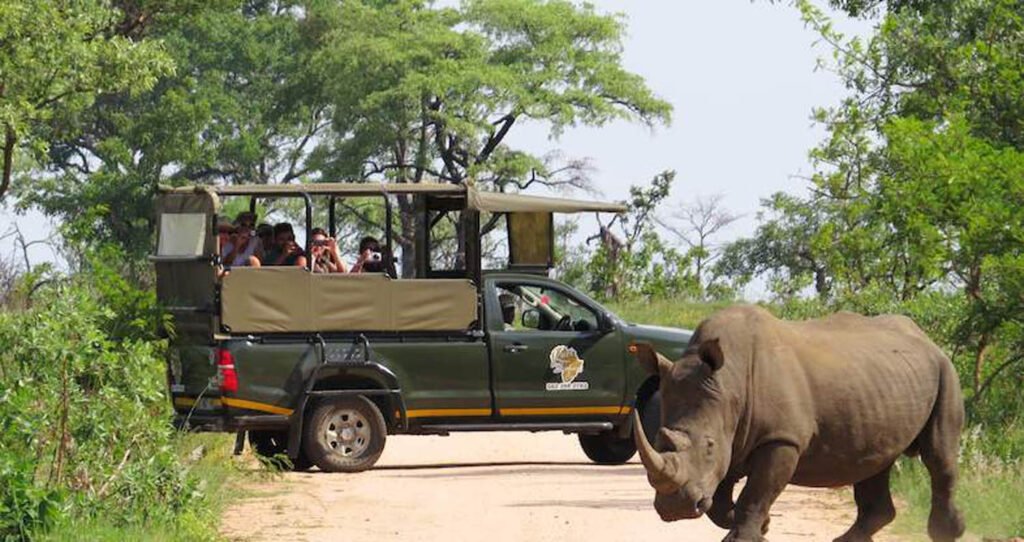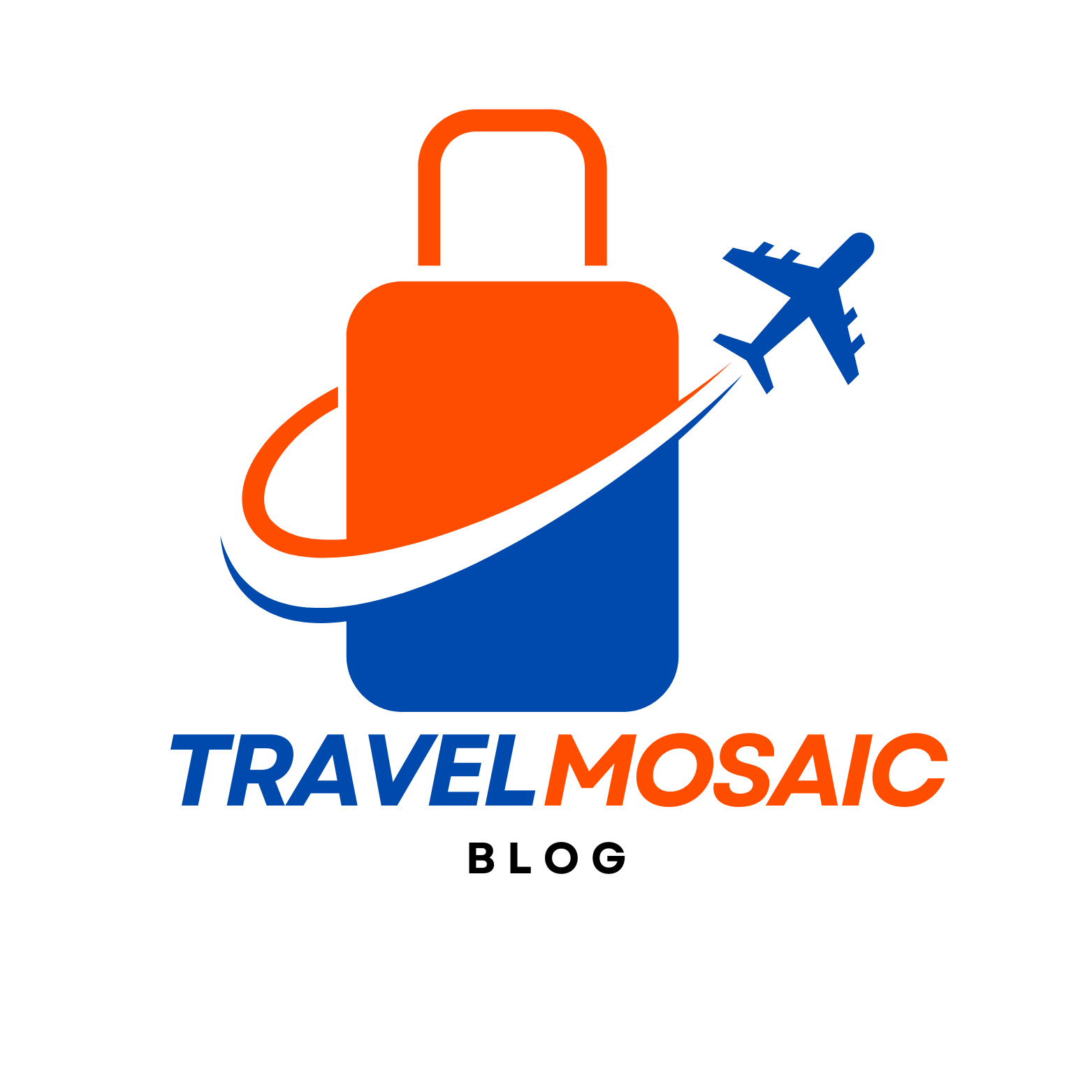Kruger National Park is one of Africa’s most famous and largest game reserves, attracting visitors from around the world who are eager to experience wildlife in its most authentic setting. Located in the northeastern part of South Africa, Kruger National Park spans an impressive 19,485 square kilometers (7,523 square miles), making it one of the largest wildlife conservation areas on the continent. The park’s diversity in ecosystems, rich history, and abundance of wildlife make it a premier destination for safari enthusiasts.

1. Overview and Location
- Location: Kruger National Park is located in Limpopo and Mpumalanga provinces of South Africa. It shares its northern boundary with Mozambique and its western border with the Kruger to Canyons Biosphere, which is part of a global network of biosphere reserves.
- Geography: The park is characterized by a wide range of ecosystems, from dense woodlands and bushveld to grasslands, riverine forests, and savannas. The Sabie River and the Limpopo River are the two major watercourses that flow through the park, creating vital ecosystems and attracting wildlife.
- Climate: Kruger has a tropical climate with hot summers (December to February) and mild winters (June to August). The rainy season is from October to March, while the dry season runs from May to September. The dry season is the best time for safaris as animals congregate around the limited water sources, making wildlife viewing easier.
2. Wildlife and Biodiversity
Kruger is home to a vast variety of animals and is known for its abundance of wildlife, particularly the Big Five (lion, leopard, buffalo, elephant, and rhinoceros). The park is also a haven for bird watchers, as more than 500 species of birds have been recorded here.
- Big Five:
- Lions: Kruger’s lions are often seen in prides, particularly around the central areas of the park, such as the Sabie River and the Mopani Rest Camp.
- Elephants: Kruger has one of the largest populations of African elephants, often seen in herds in the southern and central regions, particularly near the Letaba River.
- Leopards: Leopards are elusive but can be found in Kruger’s more secluded areas, such as the Mopani and South of Skukuza regions. They tend to be spotted during night drives.
- Buffaloes: Buffaloes are common throughout the park and often roam in large herds, particularly in the southern and central areas.
- Rhinoceros: Both white rhinos and black rhinos are present, with a significant population of white rhinos located in the Southern Kruger.
- Other Mammals: Apart from the Big Five, Kruger is home to a rich variety of mammals, including giraffes, zebras, hippos, warthogs, hyenas, cheetahs, wild dogs, and various species of antelope such as impala, kudu, waterbuck, and eland.
- Birdlife: With over 500 species of birds, Kruger is a birdwatcher’s paradise. Common sightings include African fish eagles, marabou storks, hornbills, Lilac-breasted Rollers, Secretary birds, and vultures. Birding is especially rewarding in the wet season, when migratory birds arrive.
3. Safari Activities
Kruger offers a wide range of safari activities, ensuring that visitors can explore the park in various ways. Whether you prefer self-drive safaris or guided tours, there is something for every type of traveler.
- Self-Drive Safaris: Kruger is one of the best places for a self-drive safari due to its well-maintained road network, which allows visitors to explore the park at their own pace. The park has several designated routes for game viewing, and most of the main roads are easily accessible.
- Popular areas for self-drive safaris include the Southern and Central Kruger, which are rich in wildlife.
- Guided Game Drives: For those who prefer a more educational and immersive experience, guided game drives with park rangers are available. These tours often run at dawn and dusk, the best times to spot nocturnal predators and other wildlife.
- Night Drives are an exciting way to spot nocturnal animals like leopards, hyenas, and civets. These drives take place in open vehicles with spotlights, providing a unique experience.
- Walking Safaris: Kruger also offers walking safaris with qualified field guides, where visitors can explore the park on foot and learn about the smaller creatures, plant life, and animal tracks. These safaris provide a deeper connection to nature, though they are generally restricted to specific areas.
- Hot Air Balloon Safaris: For a unique perspective, hot air balloon safaris are offered in areas near the park. These provide stunning aerial views of Kruger’s vast landscape and its wildlife, especially during the early morning hours as animals are most active.
- Cultural Tours: Although Kruger itself is a natural sanctuary, visitors can explore nearby areas to learn about the indigenous cultures, including the Shangaan and Tsonga people. Many of the lodges offer cultural experiences, such as traditional dances and cooking demonstrations.
4. Best Time to Visit Kruger
- Dry Season (May to September): The dry season is the most popular time to visit Kruger. During this period, the vegetation is sparse, making wildlife sightings easier. Animals gather around water sources, so game viewing is at its best. The cooler temperatures and minimal rain also make it the most comfortable time to explore the park.
- This is also when the Great White Rhinoceros can be spotted more easily, and there is excellent visibility for bird watching as migratory birds return.
- Rainy Season (October to April): While the wet season is less popular due to the heavier rainfall, it has its advantages. The landscape becomes lush and green, and this period is particularly ideal for bird watchers because of the arrival of migratory birds. The park is quieter, and wildlife is still abundant, though spotting animals may be more challenging due to thicker vegetation.
5. Accommodation in Kruger National Park
Kruger offers a range of accommodation options to suit all budgets, from basic campsites to luxurious lodges.
- Rest Camps: Kruger has a network of rest camps managed by SANParks (South African National Parks). These camps offer a range of facilities, including self-catering options, restaurants, shops, and guided safari activities. Some popular rest camps include:
- Skukuza (the largest camp and an excellent base for exploring the park)
- Pretoriuskop (located in the southern part of the park)
- Lower Sabie (near the Sabie River)
- Olifants (with stunning views over the Olifants River)
- Luxury Lodges: For a more luxurious experience, Kruger has numerous exclusive lodges and private game reserves on the outskirts of the park. These offer high-end accommodations with personalized services, game drives, and exclusive access to more secluded areas. Some notable lodges include:
- Sabi Sabi Earth Lodge
- Singita Lebombo Lodge
- Lion Sands Ivory Lodge
- Camping: For those who want to immerse themselves in nature, Kruger also offers campsites within the park, where you can set up tents or stay in furnished tents. Some campsites, like Nyarai, are located in remote areas for a more rustic experience.
6. Conservation Efforts
Kruger National Park plays a crucial role in South Africa’s wildlife conservation efforts. The park is home to a wide variety of endangered species and is part of numerous conservation initiatives aimed at protecting both the biodiversity of the park and its surrounding ecosystems.
- Anti-Poaching Initiatives: Kruger has invested in technology and a highly trained ranger force to combat poaching, particularly targeting rhinos and elephants. The use of drones, smart cameras, and GPS tracking systems helps monitor wildlife movements and prevent illegal activity.
- Community Involvement: The park works with local communities to promote eco-tourism and sustainable practices. Community outreach programs help educate local people about wildlife conservation, and tourism revenue supports local schools, healthcare, and infrastructure development.
